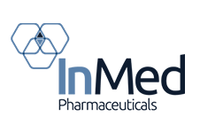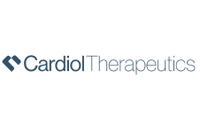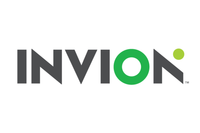Nuvo Pharmaceuticals Talks Acquisitions and Licensing Agreements

INN takes a closer look at this debt-free, revenue-generating small cap pharmaceutical company.
Back in March 2016, Nuvo Research split into Nuvo Pharmaceuticals (TSX:NRI) and Crescita Therapeutics (TSX:CTX). Nuvo held revenue and EBITDA-generating commercial healthcare products, while Crescita became a commercial dermatology company.
Nuvo has three commercial topical pain products: original Pennsaid, FDA-approved Pennsaid 2% and a heated lidocaine/tetracaine patch. Pennsaid 2% is currently sold in the US, while original Pennsaid is sold in Canada.
The company has a 26,000 square foot, FDA-licensed manufacturing plant in Quebec, Canada, which CEO John London says is only running at about 35 percent capacity.
Nuvo Pharmaceuticals currently has recommendations from these firms:
- Investment banking firm Bloom Burton & Co. on November 11, 2016 rated Nuvo as “Accumulate”, which means it expects the company to outperform the sector average over the next 12 months or longer. Bloom Burton’s analysis stated, “It is our understanding that Horizon may start direct-to-consumer advertising in 2017, which could drive upside to our base case sales forecasts…”
- BC-based KeyStone Financial stated a “Buy” recommendation on Nuvo, and stated, “[w]e are initiating coverage on the stock with the recommendation of buying half of a full position (BUY HALF) at current prices with the intention to fll the other half position at an opportune time over the next 3-12 months.”
INN sat down with London to talk about the company, its products, and what sets Nuvo apart from its competitors. Continue reading below for the full transcript of our conversation. It has been edited for clarity and brevity.
Investing News Network: John, what sets Nuvo apart from other Canadian pharmaceuticals?
John London: Most Canadian pharmaceutical companies are very much invested in doing research and development as they try to get drugs through the clinical and regulatory approval process. This tends to be a high risk and expensive business. We used to be involved in that business until March 1st of last year. At that time, we spun out all of our early stage R&D assets and the expenses that went along with them to a new TSX listed company called Crescita Therapeutics. What that left us with was revenue-generating products without significant R&D expenses.
I think that makes us unique in the small cap Canadian life sciences market because we don’t have the clinical or regulatory risk. Our lead product, Pennsaid 2% is approved by the FDA, we are generating revenue, we are profitable and at the last quarter, we had just over 17 million dollars of cash on the balance sheet, and no debt. So the fact that we’re a revenue story with growing revenue and a strong balance sheet I think is really what sets us apart from most Canadian life sciences companies.
INN: That’s great. Would an M&A be something that you would be a good target of?
JL: We’re out there looking to make our company bigger. We’re in active discussions to acquire smaller companies or products that would fit into our strategy. But we’re not naïve. We also appreciate that at some stage of the game we could well become the takeover target for a bigger company.
Our job is to maximize shareholder value, and if the price is right and there’s an opportunity to significantly increase value for our shareholders, we’re prepared to look at any transaction.
INN: Can you tell us a bit more about the Pennsaid 2% US supply agreement?
JL: Sure, just to give you a little bit of color, Pennsaid 2% is a topical NSAID which stands for non-steroidal anti-inflammatory drug. Most NSAIDs are used to treat pain, often pain from arthritis but most of them are oral medications which work quite well. But they have some fairly nasty side effects–in particular, gastrointestinal bleeding and cardiovascular issues. We’ve been able to demonstrate in clinical studies with original Pennsaid that achieves the same efficacy as an oral NSAID. However, because it’s topically applied and locally acting, there’s very low systemic exposure of the active, which side steps many of those systemic side effects.
We make our money in the US by supplying Pennsaid 2% to our partner Horizon Pharma (NASDAQ:HZNP) under an exclusive supply agreement that runs until 2029. Horizon has done a terrific job growing sales from about 2,000 prescriptions per week at the beginning of 2015 to about 10,000 prescriptions per week by the end of 2016. We supply the product to Horizon and make a margin of somewhere between 55 and 60 percent on product sales. We also supply them, on an exclusive basis, with product samples which they give free of charge to physicians who in turn, give them to patients to try Pennsaid 2%. And so, at the moment, the sales to Horizon represent probably about 85 percent of our revenue.
INN: Does the Trump administration affect Nuvo’s agreement in any way since he is pushing for keeping businesses inside the US?
JL: I don’t think so. Our agreement with Horizon is a clear agreement. They’re responsible for paying us a fixed price per bottle. Any border charges, they would be responsible for paying. Like most pharmaceutical products in the US, Pennsaid 2% is sold by Horizon for quite a high price, relative to what it is that we charge them. So I would expect that even if there was a charge or a duty – which, by the way, we’re not expecting, but even if there was, I don’t think Horizon would have difficulty absorbing it.
INN: I see. Right now Pennsaid is your only product. Are there any plans to further expand that line?
JL: Well, we do have one other product, the HLT patch which is a patch that’s used to numb the skin prior to needle procedures. It is sold by a commercial partner in the US and by a different partner in Europe. However, the sales are relatively modest. We certainly are looking to expand our revenue streams and we’ll be doing that in two ways. The first way – and probably the easiest way – is by out-licensing the rights to Pennsaid 2% to partners who have a commercial presence in different territories around the world, thereby making Pennsaid 2% a global brand. Right at the moment it’s just sold in the US. That’s one engine of growth.
The second engine of growth is M&A. We are looking for and have some discussions on going to acquire rights to products that we could out-license around the world and also manufacture. We have an underutilized manufacturing facility just outside of Montreal that, even selling the huge volumes that we’re currently selling to Horizon for the US is running at about 35 percent capacity. The products or businesses that we are most interested in would be topicals like creams, gels, lotions, emulsions, etc., which tends to mean that we’re looking for products that are topical pain products, dermatology products and some women’s health products. These types of products fit into our manufacturing facility quite nicely. That’s our second engine of growth.
INN: Is Pennsaid 2% available in Canada?
JL: No. Original Pennsaid was approved quite a few years ago and it is sold in Canada, although there’s a generic version as well. The future of our Pennsaid franchise is focused on Pennsaid 2% which is a significantly improved version of original Pennsaid. Original Pennsaid requires that you put it on four times a day which is pretty inconvenient. Pennsaid 2% is twice a day. Original Pennsaid is like water in viscosity and it’s quite runny when you put it on. Pennsaid 2% is a gel that would be like Purell in viscosity. And last but not least, Pennsaid 2% is highly proprietary. We have 19 patents that have been issued in the United States that protect it and similar patents that are issued and pending in major territories around the world, whereas, original Pennsaid is effectively off patent.
Our plan is to make Pennsaid 2% the dominant topical NSAID. As I mentioned, currently Pennsaid 2% is only approved and selling in the US. Original Pennsaid is currently sold in Canada, Italy, Greece and the UK. The plan is to transition those markets, as well as the other markets, to Pennsaid 2%.
INN: I see. Back in November, one of your press release stated you anticipate signing licensing agreements across multiple countries. Could you share which countries you’re working on?
JL: Sure. The countries fall into two buckets. Most jurisdictions will use our FDA approval as the basis for approving Pennsaid 2% in their particular jurisdiction. However, a second group of countries require an additional clinical study to support our application for approval. Those countries are: Canada, the EU and Australia. For those territories, we’re currently running a phase three study of Pennsaid 2% in Germany in ankle sprains. We’re about two thirds enrolled in that study and we’re expecting to have the results in Q2 this year. Those results are important for those jurisdictions that I mentioned.
We’re further advanced in discussions with potential licensees for the countries other than Canada, Australia and the EU. For Canada, Australia and the EU, prospective licensing partners are obviously waiting to see the study results which we’ll have in Q2.
INN: Lastly, are there any pharmaceutical companies or competitors you’re keeping an eye on?
JL: We don’t look so much at companies that we’re competing with as the products that we compete against. In the United States, the only other topical NSAID that is approved is Voltaren Gel which is a product that was approved several years ago and developed by Novartis (NYSE:NVS). It is sold in the US by Novartis’ licensee Endo International (TSX:ENL,NASDAQ:ENDP). That product requires that you dose it four times a day unlike Pennsaid 2% which, as I mentioned, is twice a day.
You have to put quite a quantity of Voltaren Gel on at each dose compared to Pennsaid 2%. We believe Pennsaid 2% is more effective because it has a penetration enhancement system which actually delivers the active ingredient diclofenac through the skin to the affected tissue more effectively. Currently in the US, sales revenue of Pennsaid 2% has now exceeded sales revenue of Voltaren Gel. As we look around the world, Voltaren is really the major competitor in almost every territory. So we’re quite confident that we can compete in all jurisdictions, given that we’ve competed very effectively against Voltaren in the United States.
INN: Great. Thank you, John.
Don’t forget to follow us @INN_Resource for real-time news updates!
Securities Disclosure: I, Pia Rivera, hold no direct investment interest in any company mentioned in this article.
Editorial Disclosure: The Investing News Network does not guarantee the accuracy or thoroughness of the information reported in contributed article. The opinions expressed in these interviews do not reflect the opinions of the Investing News Network and do not constitute investment advice. All readers are encouraged to perform their own due diligence.



